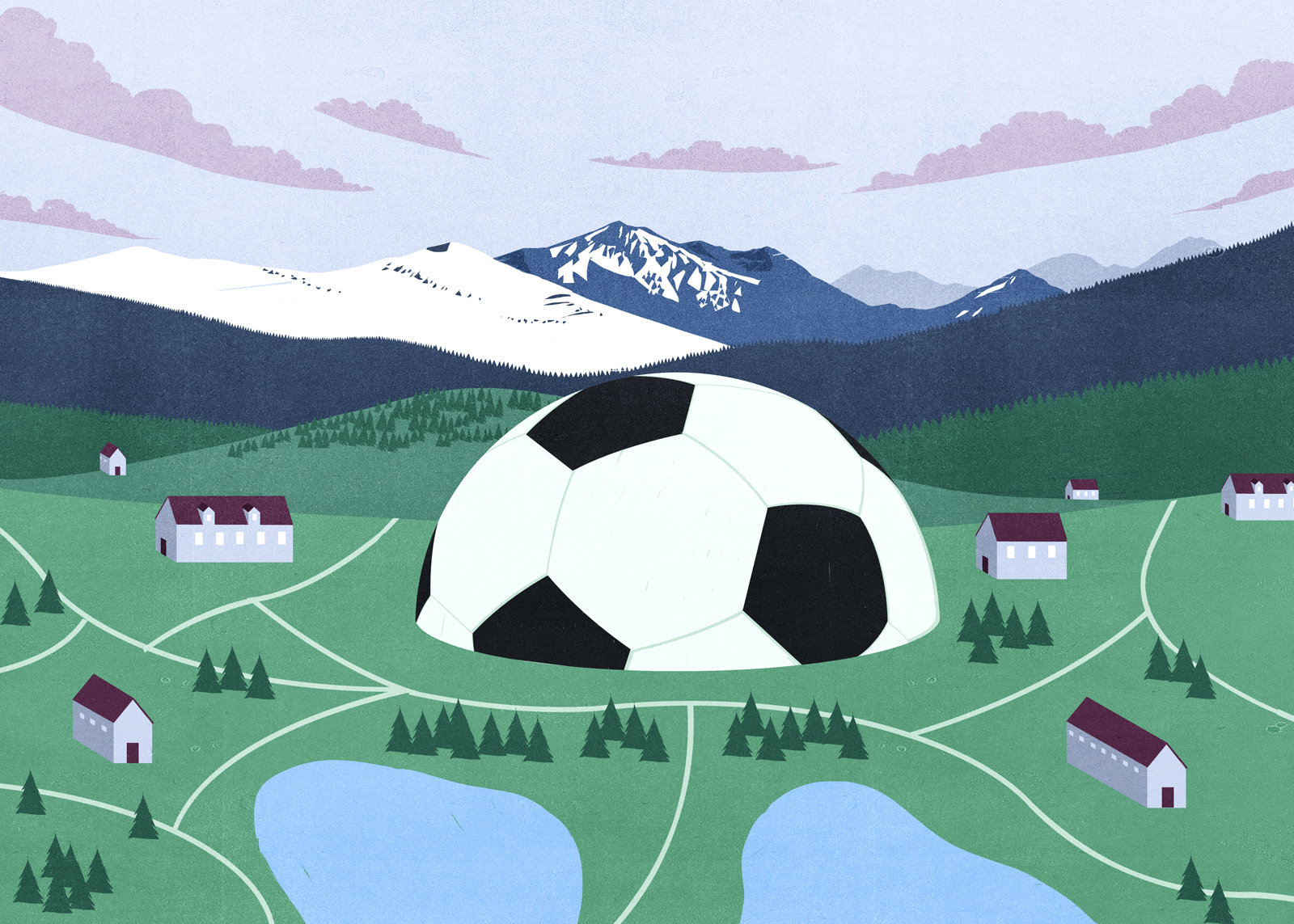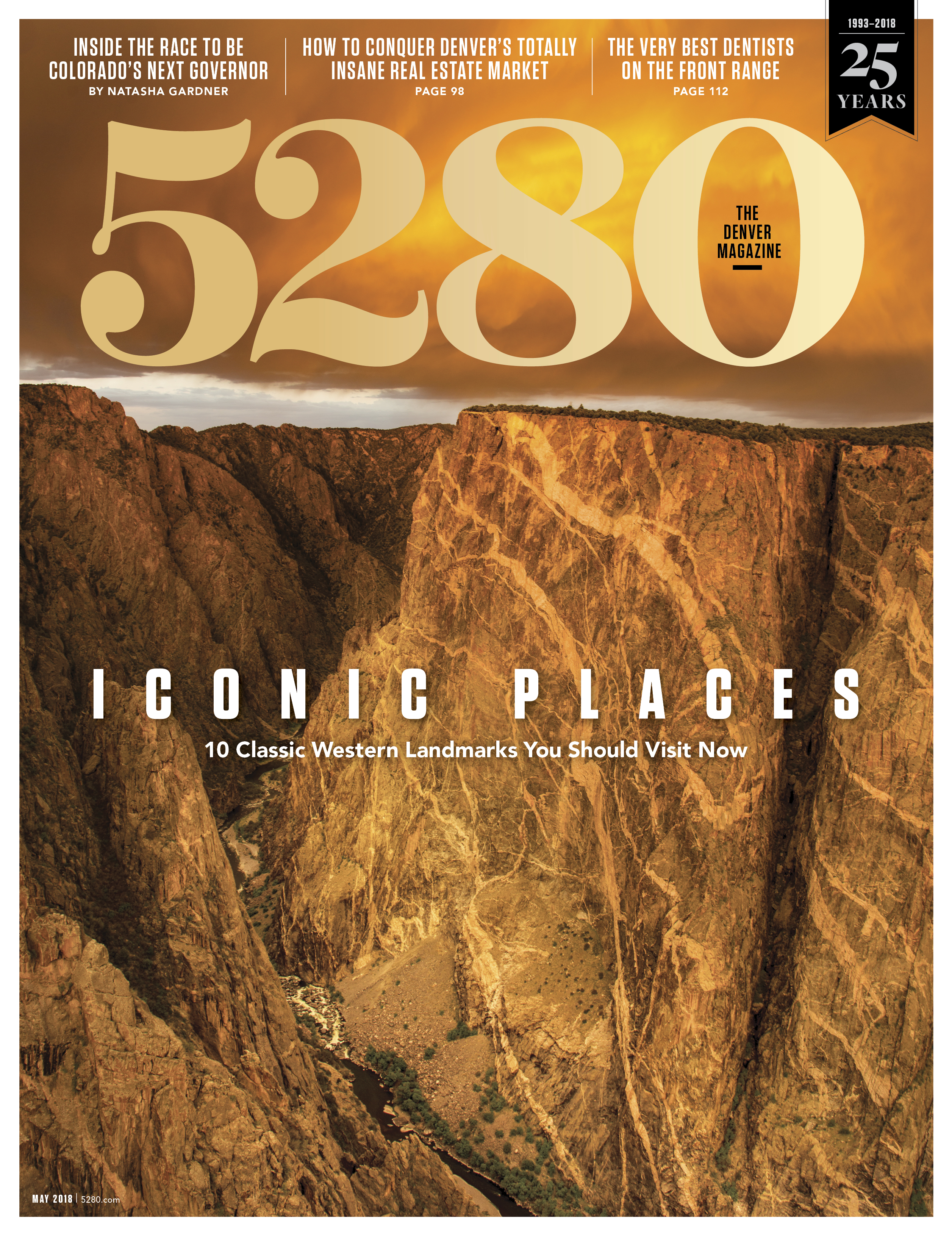The Local newsletter is your free, daily guide to life in Colorado. For locals, by locals.
The most prominent structure in Grand County sits like a giant dollop of whipped cream atop a windswept ridge above Granby. From far away, you might mistake it for a massive wedding tent, a temporary space to fete some Kardashian or Mnuchin or other ersatz American royalty. But this is flyover country for those folks, and the structure is not an event space.
Or, rather, it’s not the kind of event space you might imagine when you first see it. This is my hometown’s $600,000 indoor soccer field, as improbable a building as exists in any rural Colorado county. Ten years ago it was a vacant lot owned by the East Grand School District. But since 2008, thanks to a partnership between the district, the town, the Grand County Soccer Club, and an anonymous donor whose generosity gives the whole thing an intriguing air of mystery, the dome has become a place of peculiar magic, capable even of making the invisible visible.
My legs always have been too short for my athletic ambitions and yet, at 62, I continue to play soccer. I love the civilizing influence of the game’s 17 laws that promote fair play (yellow card infractions include “unsporting behavior” and “deliberately leaving the field of play without the referee’s permission”) and the inevitable camaraderie of teammates from a wide variety of backgrounds. I moved to Granby in 2016 after three decades in Los Angeles and Orange counties in Southern California, where the 22 players on my Palos Verdes United team came from 11 countries. Not surprisingly, I’ve learned to swear competently in several languages.
One of my biggest hesitations about moving to rural Colorado was the thought of leaving behind that vibrant ethnic mashup. Eighty-eight percent of the people in Grand County are white, like me. But if the statistics in last May’s “State of Grand County Economy” report, by Innovation Economy Partners, are accurate, that’s changing fast. Grand County’s white population has grown by only 10 percent since 2000, while the minority population has increased by 93 percent. The Hispanic population, in particular, is projected to grow by 54 percent in the next seven years.
That demographic pattern is repeated across rural Colorado and the West. Headwaters Economics, a nonprofit research group in Bozeman, Montana, recently studied trends in 278 rural counties in 11 Western states and found that minority populations have grown in 99 percent of those counties during the past 35 years. The anti-immigrant fearmongers will tell you this is an ominous trend. The fearmongers, I am here to tell you, are wrong. Growing minority populations have helped communities expand and have slowed population decline in counties that otherwise might have lost residents. Since incoming minorities tend to be younger, the Headwaters study says, those new arrivals are an “economic bellwether” of growth creation in some places, and in others, they’re keeping schools and local businesses alive.
It’s no accident that my wife and I chose to raise our children in a region full of immigrants from around the world. During our many years in Southern California, we encountered countless languages, dialects, and cultures—and our family is the richer for it. Soccer thrives in places that are especially diverse, because unlike American football, soccer is a world sport. Select a spot on the globe, set up makeshift goals, and within minutes you’ll have a game going.
The players may not speak the same language or have anything in common. They might be roofers or ranchers or bankers or mothers. They might drive everything from battered trucks to expensive SUVs. None of that matters. Soccer players are simply looking to play, and I’ve yet to find a better petri dish for meaningful cultural exchange. If it were up to me, I’d suggest the U.N. General Assembly convene in short pants on a grass pitch—with a keg on the sidelines.
During my years as a visitor to Grand County, I often wondered about the giant white tent on the hill. Once I became a full-time resident in May 2016, I drove up, parked outside, and peeked through a window at what seemed like a mirage: a pristine turf field with a goal at each end. In the rafters above, lights and heaters promised nighttime and year-round play for local school teams, an adult rec league, and anyone else who wanted to reserve the field. I showed up for a pickup game that fall. The matches are organized and overseen by Elliot Lauber, the town’s assistant recreation director, and are designed to bring out locals who might be interested in joining one of the league’s six organized teams. I was recruited onto the Real Fraser team, not because of my dazzling field play—I had not yet touched the field—but because I happened to park next to the team’s manager.
Turns out, Real Fraser is known in the league as the “gringo team.” Everyone speaks English, so I fit right in—if you ignore my white hair and the 30-year age difference between my teammates and me. But one look around the dome that night made it clear that this is where you can find many of Grand County’s mostly invisible Latinos, who often work on ranches and in hotels and restaurant kitchens. Last fall the league’s other five teams were captained by men named Rios, Perez, Rivas, Garcia, and Jacobo. Opposing players swore almost entirely in Spanish, which made Lauber’s job as league organizer particularly challenging. “I took Spanish in high school,” he says, “so I understand maybe 20 percent of what they’re saying.”
No matter. We all came to play. The Latino players with their families in tow, their kids taking over the field between league games. The twentysomething lifties working off yesterday’s hangovers. That one Eastern European guy with the incomprehensible footwork.
The dome was once surrounded by scrub and mud, but the town convinced local nonprofits, foundations, and corporations to pony up enough cash to make it the centerpiece of a recreational complex. When the spring season opened on April 12 of this year, the dome was flanked by a paved parking lot, tennis courts, and a playground.
To me those improvements felt like progress. Of course, President Donald Trump and many of his supporters suggest building a wall, but based on my experience here, I suggest an alternative. For the estimated $22 billion price of building that wall on our country’s southern border, we could create nearly 37,000 soccer domes across the nation in an effort to bring people together.
There’s no real reason for a town of about 1,900 residents to have an expensive, year-round soccer facility or for the teams that play there to come from as far away as Leadville. Granby’s field exists thanks, in part, to that generous, anonymous donor at whose motives I’m left to guess.
Brad McClain, the president of the Grand County Soccer Club, however, has offered a clue to the donor’s rationale. McClain told me about the benefactor’s support for a nonprofit called Soccer Without Borders (SWB), whose mission is “to use soccer as a vehicle for positive change, providing underserved youth with a toolkit to overcome obstacles to growth, inclusion, and personal success.”
In Colorado, the group operates out of Greeley; its website recognizes in soccer the power to welcome strangers. SWB gives those newcomers a place that feels like home, a chance to succeed, sometimes even to heal. Friendships made on the field often extend well beyond the pitch, and I’ve witnessed the sport’s charm countless times during a lifetime of play. McClain sees the same results in his club teams and on the girls team he helps coach at Granby’s Middle Park High School (none of which are connected with SWB). “That’s where you see the interaction,” he says. “It takes the generational introduction of these kids, first becoming friends in middle school and high school, up to where they get together as adults to play. Because of soccer, there’s a stronger connection between them.”
So there it sits, Granby’s big tent, a magnet for people of all kinds to gather and play. Benny Perez, the 22-year-old manager of the adult league’s Cloud City FC, just might be the perfect example of how the facility can impact lives. He went to high school in Granby but now lives in Leadville. Still, every Thursday night during the fall and spring seasons, he and his Lake County teammates, all Latino, make the 100-mile drive to Granby’s dome. “Soccer,” he says, “is what gets us there.”
Martin J. Smith is the author of five novels and four nonfiction books, including the essay collection Mr. Las Vegas Has a Bad Knee. He lives in Granby with his wife and rat terrier, Scottie. Email him at letters@5280.com.









